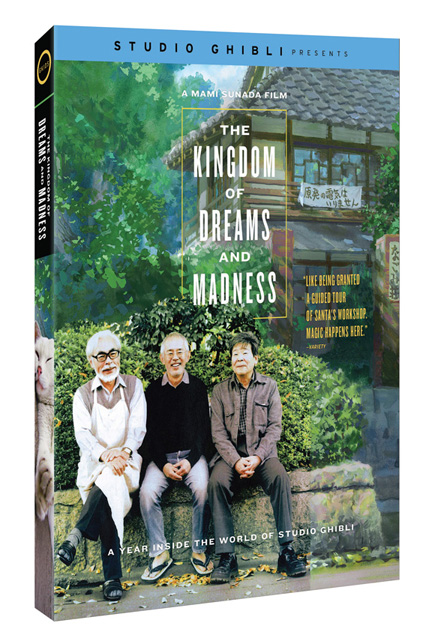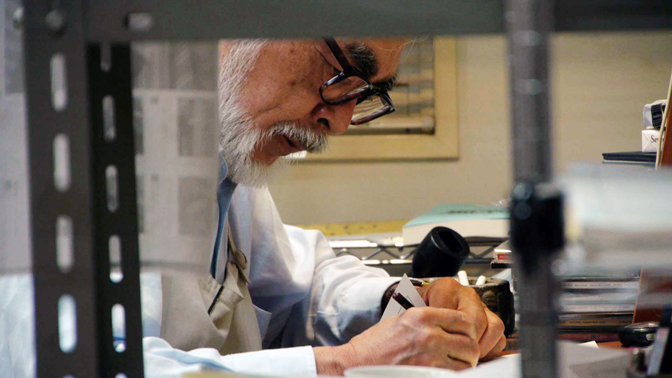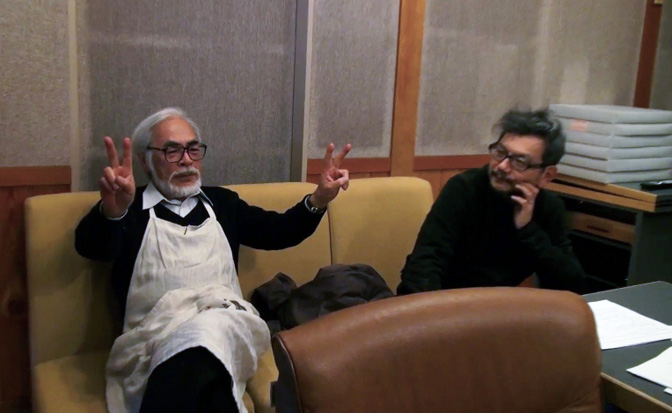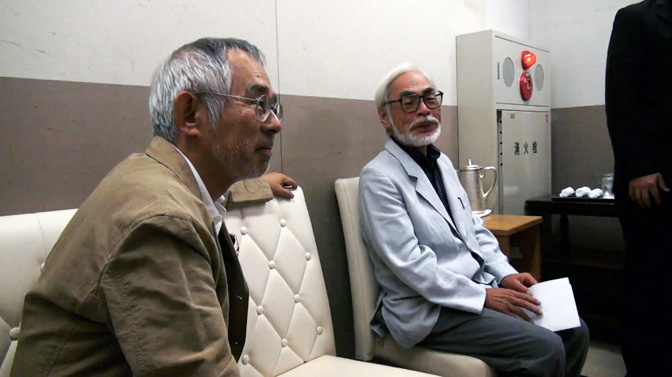THE KINGDOM OF DREAMS AND MADNESS
Mami Sunada, Director
Studio Ghibli, Tokyo, Japan
118 min.
2013
There is, without doubt, one production house in the the anime universe that all familiar with the medium are securely aware of. Studio Ghibli, located in the Kognei district in Tokyo has been producing iconic universal films since 1985. Directed by Mami Sunada, the documentary follows the three key members, Hayao Miyazaki (Director), Toshio Suzuki (producer), and Isao Takahata (Director) through a period of production while Miyazaki and Takahata produce two competing films. The film’s primary focus is upon Miyazaki as he works upon his final film, The Wind Rises, while Takahata toils predominantly offscreen upon The Tale of Princess Kaguya. In 2013, both films received wide acclaim upon their release.

Kingdom of Dreams and Madness, 2013
Sunada clearly illustrates the history of Studio Ghibli and unique brilliance of Miyazaki, Suzuki, and Takahata through an immersive and generously paced analysis. From the extremely structured work schedule of Miyazaki to the calm balanced management of Suzuki to the ephemeralness of Takahata, one can gather the strangely familiar relationship of genius. One item American viewers should note is the lack of barriers between master craftsperson and the general public. Miyazaki appears to live in a rather ordinary Tokyo neighborhood (unlike his American “gated community” equivalents). Miyazaki interacts with the local community in familial ways. For instance, during December he places two stuffed lambs (production pieces, not formally alive) in his window for the local children to muse upon.

Hayao Miyazaki working on THE WIND RISES (© 2013 dwango)
Anime is the graphic language of today’s global children. This is in large part due to the high production values maintained by Studio Ghibli and its’ peers. The film gives a sense that the studio functions as an extension of the family with Miyazaki as the over-arching patriarch. There is light elusion to his tyrannical side, yet it is evident his staff hold the grand master in the highest regard. Even when Miyazaki delves into his darker more pessimistic side, there is still a strand of hope. This light (frequently a strong young female character) can often be seen in his films, most succinctly in Spirited Away, 2001.

Hayao Miyazaki and Hideaki Anno (© 2013 dwango)
There is also Studio Ghibli’s mascot, the lazy feline, Ushiko, that supports the humanist side to this production. Ushiko lounges without care, sunbathing atop picnic table as Miyazaki shares thoughts on the dilemmas of the human condition, his personal angst, or while reminiscing about his youth. These scenes are the most heartfelt moments in the film. One may question the authenticity due to the perceived strictly conservative Japanese societal structure, however, Miyazaki puts himself all the way out there. It is apparent, that he wants future generations to have opportunity (and hope), yet believes the world is going to hell in a hand-basket.

Toshio Suzuki and Hayao Miyazaki (© 2013 dwango)
Nevertheless, there is a an organized sense to this film that parallels Japanese culture. This documentary is certainly memetic of the persevering attitude of the Japanese. In recent years, Japan has endured major catastrophes (the Fukushima Daiichai Nuclear Disaster and the Tōhoku Earthquake and Tsunami, 2011). these events have created a paradigm shift in communal attitudes and physically restructured lives. Through Ghibli Studio, one can easily track the evolution of anime within Japan and beyond. Any steward of the medium is aware of the studio’s significance. Yet, beyond the note, this film brings cause to understand that universally defining and significant moments in life can be found in one’s own community (or perhaps a chat with a kitty).
Additional Links:
U.S. Trailer – https://www.youtube.com/watch?v=M3Z74KUaalo
Studio Ghibli (English) – http://www.studioghibli.com.au
Online Ghibli – http://www.onlineghibli.com/films.php
Review by Chester Alamo-Costello


